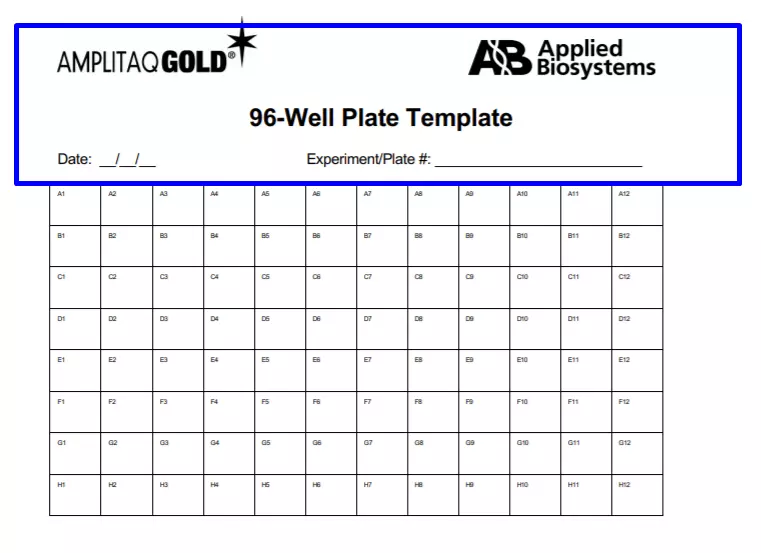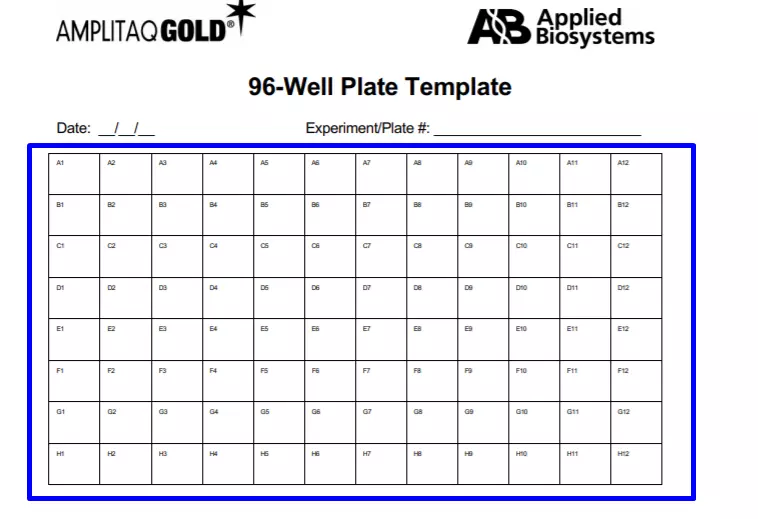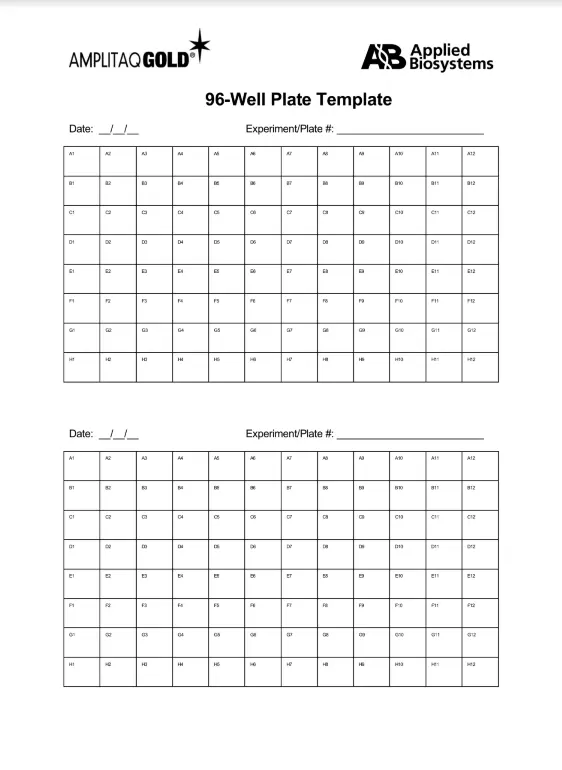A 96 Well Template is a layout or guide used in conjunction with a 96-well plate, a standard tool in laboratories for performing high-throughput analysis. Each well in the plate can contain a tiny volume of liquids and is used for various experiments including cell culture, molecular biology assays, and chemical reactions. The template provides a systematic way to record the contents of each well, track experimental conditions, and document results. It’s crucial for ensuring accuracy and reproducibility in experiments, as it helps scientists keep precise records of their work, including the specific configurations and concentrations of samples.
The template is typically formatted in a grid-like structure mirroring the physical arrangement of the wells on the plate, usually labeled from A to H vertically and from 1 to 12 horizontally. This makes it easy to reference specific wells during an experiment or when analyzing data.
Other Charts and Tables
You can find even more editable charts and tables forms accessible here. Just below, we selected a number of the more popular forms available in this category. Also, do not forget that you can easily upload, fill out, and edit any PDF form at FormsPal.
How to Complete 96 Well Template
Thanks to the simple markup and standardization, filling in the template is not difficult. You can print out the 96 well template and fill it out manually, as well as enter the data directly on the page in the PDF form. We offer you an online form builder that will help you conveniently complete and save the well template. Let’s see how to do this in three tips:
Identify the Experiment.
In order not to confuse the data for different experiments, first of all, specify the date and number of the experiment on the corresponding lines. You can also associate the template number with the number of the deep well plate.

Enter Mandatory Boxes.
In the body of the form, fill in the row and column that are required for your experiment. Please note that extra lines should be removed from the template if they are not used. Do not leave empty wells.

Specify the Changes.
Again, in the table, determine the changes that are expected to be seen after the reaction if this is a project design. You can mark the boxes and rows of templates with colors.
Generally, this is a brief guide to using the 96 well template. A specific experiment or medical analysis using deep well plates requires its own input data. There is no need to specify the sequence of steps for each procedure since we have presented the general order of filling in above. This is a simple form, so you can easily use it for the online design of experiments such as PCR, ELISA, and many others.
